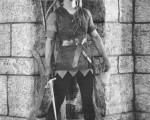
On 18th January 1510, Henry VIII and twelve of his men disguised themselves as outlaws, or Robin Hood and his merry men, and surprised Queen Catherine and her ladies. Chronicler Edward Hall records this event:
[Read More...]
On 18th January 1510, Henry VIII and twelve of his men disguised themselves as outlaws, or Robin Hood and his merry men, and surprised Queen Catherine and her ladies. Chronicler Edward Hall records this event:
[Read More...]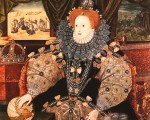
Fashion has had innumerable iterations throughout the centuries, with the Renaissance bringing about not just changes in thinking, art and education, but also clothing style. And along with new clothing styles came sumptuary laws, which created strict visual distinctions between the different classes. There were also restrictions on who could wear which fabrics.
The lower classes wore linen or wool; cotton was not allowed to be imported into England so as to protect the wool trade. The upper classes enjoyed the luxury of silk, brocade, velvet, and satin. Henry VIII passed his first sumptuary laws in 1510, shortly after ascending the throne. Given that clothing was an automatic identifier of who was what class, Henry wished to keep the status quo in place, despite the rising wealth of the merchant class. Mary I continued this trend, as did Elizabeth I. These same sumptuary laws also allowed the Tudor monarchs to collect fines and bestow special status on favorites.
[Read More...]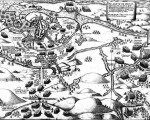
Christmas Eve, 1601. The setting: a sleepy, south-eastern port town in Ireland. The Nine Years War of Ireland had been raging since 1594, with the English fighting to have control of Ireland under Elizabeth I of England. The unorganized Irish had won several battles and skirmishes against the English, frequently through the use of ambush. But in 1601, trained Spanish troops arrived, giving great hope to the Irish.
Ireland was a Catholic country and Catholic Spain had recently suffered the humiliating defeat of their Armada by Elizabeth I in 1588. The Spanish, led by Don Juan del Áquila, arrived at Kinsale in September of 1601, with Kinsale being the poorest choice to undergo a siege, as it was situated in a hollow and did not have strong walls. The Spanish were forced to land at Kinsale due to poor weather. The English experienced some relief when they learned that the Spanish fleet was headed for Ireland and not England.
[Read More...]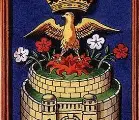
Jane Seymour’s phoenix badge[/caption]Jane Seymour, third wife of Henry VIII and mother of Edward VI, died days after giving birth. An inscription above her grave read:
[Read More...]Here lieth a Phoenix, by whose death
Another Phoenix life gave breath:
It is to be lamented much
The world at once ne’er knew two such.
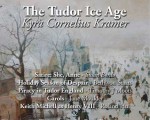
Happy Christmas Tudor Society Members!
Unless you’re one of our many Australian or South American members, December can be a very cold month indeed. What better way to keep out the damp and the wind than snuggling up with our December Tudor Life Magazine. It’s full of Christmas and festive themed articles, and this month we also have some food related sections too … all to help you survive the weather, where’er you are.
[Read More...]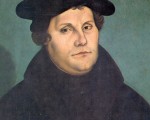
Today is the anniversary of Martin Luther’s birth in 1483, so regular contributor Heather R. Darsie joins us today with an article on this fascinating man and his influence on the German language.
“When you go to bed in the evening, take something from the Holy Scripture with you to bed, in order to consider it in your heart and – the same as an animal – ruminate over it and gently fall asleep. It should not be much, but rather a little, but a good thing to go through and understand. And when you get up in the morning, you will find your profits from the previous day.”
These were Luther’s feelings about the meaning of the Bible, and perhaps also a glimpse into his feelings about a person’s relationship with God.
[Read More...]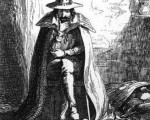
The Protestant King James I of England had recently taken the throne in March 1603 after the death of Elizabeth I. There was hope that anti-Catholic laws would become less severe, but as of 5 November 1605, that had yet to happen.
Guy Fawkes was recruited in May 1604 by Thomas Wintour, cousin of Robert Catesby, to assist with the diabolical plot of blowing up the King, the Prince of Wales, and others at the next Opening of Parliament. The conspirators would then kidnap Prince Charles and Princess Elizabeth and return the country to the catholic fold.
[Read More...]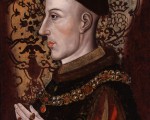
As you may have read in this month’s Tudor Life magazine, 25th October marked the feast day of Saints Crispin and Crispinian, and following the victory of England over France on 25 October 1415 at the Battle of Agincourt, the day became a celebration of that event too. Celebrations included bonfires, revelry and the crowning of a King Crispin.
Today, Heather Darsie shares an article with us on the Battle of Agincourt back in 1415.
[Read More...]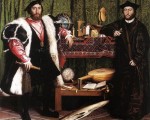
Thank you to our resident art expert Melanie Taylor for letting me know about this radio programme which aired today on the BBC Radio 4 programme “In our Time”.
Blurb: Melvyn Bragg and guests discuss the life and work of Hans Holbein the Younger (1497-1543) during his two extended stays in England, when he worked at the Tudor Court and became the King’s painter.
[Read More...]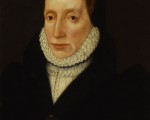
Lady Margaret Douglas, Countess of Lennox, was born on 8th October 1515. Margaret was the daughter of Margaret Tudor, Queen Dowager of Scotland and sister of Henry VIII, and Archibald Douglas, 6th Earl of Angus. She was born at Harbottle Castle in Northumberland, home of Thomas, 2nd Lord Dacre, because her mother went into labour as she fled Scotland to go to Henry VIII’s court in London. Margaret was baptised on 9th October, but her mother was ill after the birth and wasn’t well enough to travel onward to London until spring 1516. Mother and baby stayed in England until June 1517, when Henry VIII sent his sister and niece back to Scotland.
[Read More...]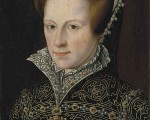
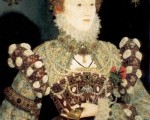
Gloriana, Elizabeth I, is the famous Virgin Queen of England. She never took a husband. Much speculation has swirled around Elizabeth’s decision to remain single. Several tragic, if not traumatic, events are cited as reasons why Elizabeth chose not to marry.
Elizabeth was born on 7 September 1533. On 19 May 1536, when Elizabeth was not quite three years of age, her mother, Anne Boleyn, was beheaded by order of her father. Elizabeth, a precocious child, asked following the fall of her mother, “how haps it governor, yesterday my Lady Princess, today but my Lady Elizabeth?”. Elizabeth’s first step-mother, Jane Seymour, died of puerperal fever in 1537 only days after giving birth to Elizabeth’s little half-brother. Elizabeth was four years old. Katherine Howard, a cousin of Elizabeth’s on her mother’s side and Elizabeth’s third step-mother, was beheaded for high treason for her “dissolute life previous to her marriage” in February 1542. Elizabeth was eight years old.
[Read More...]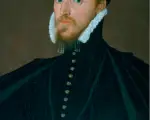
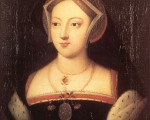
Today we have an article by Sarah Bryson, author of Mary Boleyn: In a Nutshell and a regular contributor to the Tudor Society.
Mary Boleyn is most certainly a woman of mystery. Her younger sister was Anne Boleyn, second wife of Henry VIII and Queen consort of England. Mary’s brother was a well-known member of Henry VIII’s court, who was evangelical in his religious beliefs and who, like his sister Anne, ended up on the scaffold. Mary’s father was also an important member of Henry VIII’s court. Thomas Boleyn was a talented man, who was fluent in French and who was sent on many missions as an ambassador for England. He was cunning and smart and used his skills and wits to provide a fantastic education for his children, as well as to further himself and his family at court. And yet when we look at Mary’s life compared to her famous siblings and father so little is known.
[Read More...]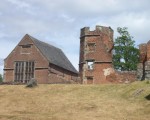
Archaeologists are starting a five-year project to reveal the secrets of Bradgate Park, the estate which was home to Lady Jane Grey and her family.
[Read More...]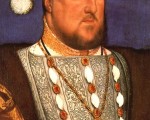
Henry VIII was born on 28 June 1491 at Greenwich Palace. He was the second son of Henry VII and Elizabeth of York, but became heir to the throne when his brother Arthur died in 1502. He inherited the throne on the death of his father in April 1509, when he was just 17 years old, and he was crowned on 24 June 1509 in a joint coronation with his new bride Catherine of Aragon, the widow of his brother.
His reign was seen as the start of a new era, after his father’s harsh regime, and Henry was very much a Renaissance prince at the start, with his charm, good looks, intelligence, love of sport and desire to fight bribery and corruption. However, he has gone down in history as a larger than life, hulk of a man who had six wives and who executed two of them, and who, according to one contemporary source, executed 72,000 during his reign. His reign is famous for the break with Rome which happened as a result of Henry VIII’s “Great Matter”, his quest for an annulment of his marriage to his first wife Catherine of Aragon. Catherine had been unable to provide Henry with a living son and Henry had come to view the marriage as contrary to God’s laws, since Catherine was his brother’s widow. He had also fallen in love with Anne Boleyn. The Pope refused to grant Henry an annulment, but Henry took matters into his own hands after reading that kings and princes were only answerable to God. The marriage was annulled in 1533, Henry VIII married Anne Boleyn and the Reformation Parliament of 1529-1536 passed the main pieces of legislation which led to the break with Rome and the English Reformation.
[Read More...]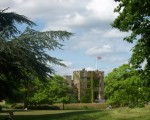
Situated in the beautiful countryside of Kent, UK, Hever Castle was the childhood home of Anne Boleyn, one of the most famous women in English history.
[Read More...]